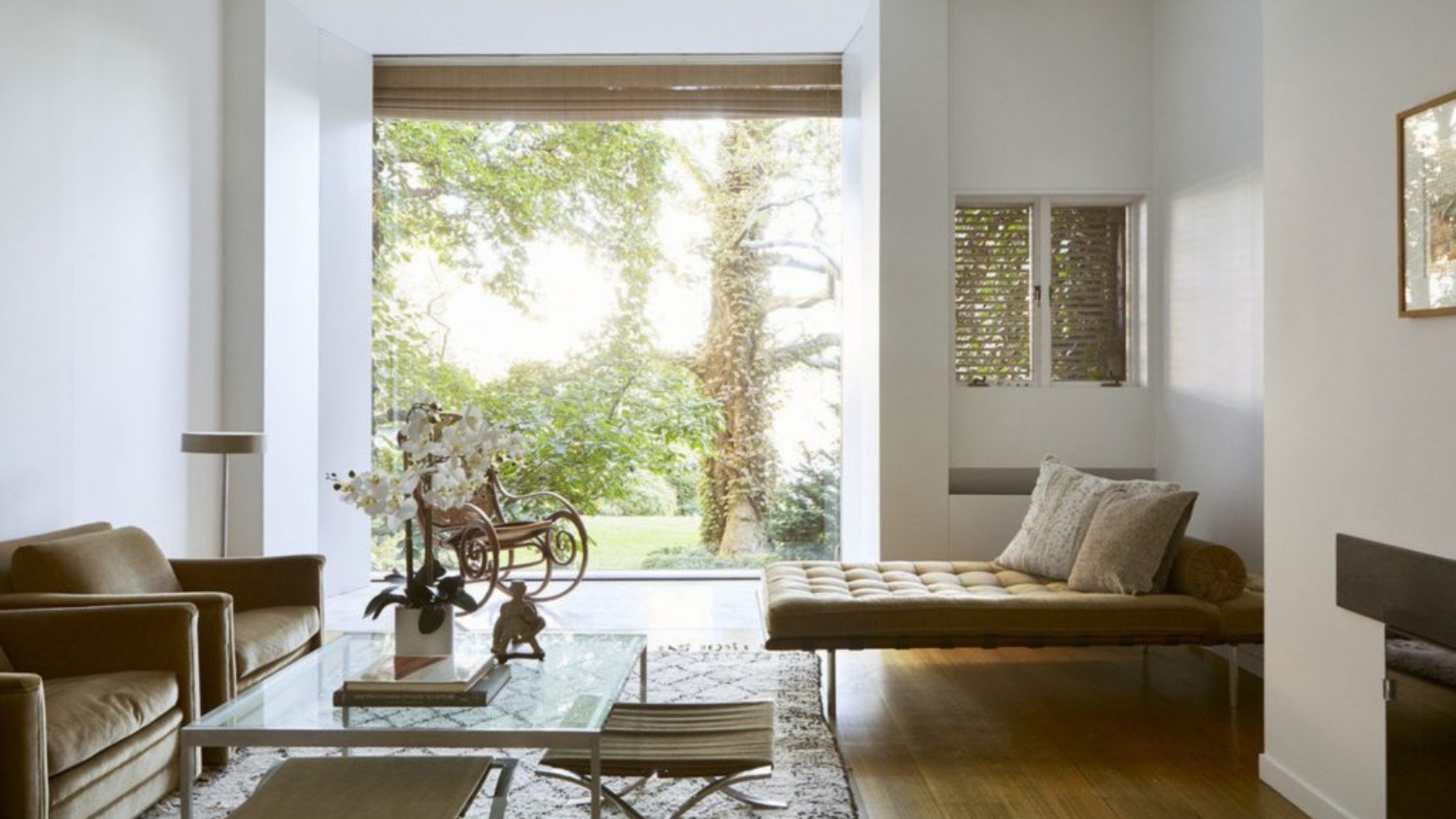
Though it sold within months of appearing on the market, I.M. Pei’s New York townhouse — a four-storey bolthole in the middle of Manhattan’s Sutton Place — is a powerful reminder of the indelible legacy left behind by the Pritzker Prize-winning architect, who passed away last year in May. He was 102. More widely recognised for ambitious modernist structures — built everywhere from Hong Kong to Doha — Pei’s longtime abode on US soil is a similarly revealing aspect of his lifelong contribution to the built environment: Drawing on characteristic elements of modernist creative movements such as natural light, tactile materials and an uncluttered aesthetic — always informed by considerations of functionality.
Prior to the sale of Pei’s New York townhouse, Christie’s International Real Estate went to exhaustive lengths to document it for a new generation of luxury property investors. Most certainly, we won’t deny that having a multi-storey home in the heart of Manhattan hurts this home’s prospects on the market as an all-time gem of interior design but, as you’ll see from the images below, there are lessons to be gleaned (largely revolving around what Pei did with the place) which can be meaningful for a broader audience. Let’s dive in.
“A clean, well-lighted place”

Upon purchasing the townhouse in 1973 (from a cousin of US president Theodore Roosevelt, no less) I.M. and his wife Eileen embarked upon an extensive multi-year remodeling of the building’s internal spaces. A plethora of new, custom-made features were added — many of which were of Pei’s own design. The most practically significant of these was an oblong skylight, which worked in tandem with a coiled spiral staircase as a prism through which to channel natural light to all of the floors below.
This conjunction (of a built, overhead light-well and an internal staircase) would eventually come to be known as a signature I.M. Pei feature — most famously incorporated into the design of the Louvre Pyramid (1989). Elsewhere, Pei was sure to add floor-to-ceiling windows throughout the property — all but guaranteeing the continuity of natural light between private and communal spaces.
Make materials matter

A crucial part of Pei’s remodel was the widespread installation of new floors and build-in surfaces. As with notable public projects (i.e. the National Gallery East Building and the Mesa Laboratory) the architect favoured simple building materials capable of universal appreciation — no doubt by a breadth of Chinese, American, and European guests who crossed his domestic threshold.

The majority of Pei’s home is floored in a combination of European marble and Tasmanian oak — materials chosen for their “lean and simple” style and capacity for adaption to various modes of interior design. Similarly, the four wood-burning fireplaces (one located on each floor) are framed by mantels cut from smooth soapstone; with the material serving to draw attention to the overall shape and design — once again, conceived by Pei himself.
Social space as centrepiece

To be sure, the size (3,848 sq. ft.) and layout of Pei’s townhouse conferred tremendous boons on his ability to design a compelling domestic centrepiece: Between the dining room, internal staircase, library and private garden looking onto the East River, the property has no less than four settings for socialising. Nevertheless, depending on your lifestyle and the spaces at home which you gravitate towards instinctively, any one of the aforesaid are an illuminating starting point for your own modernist highlight. Bibliophiles would do well to take a leaf out of Pei’s tried and tested book — by turning literature into a focal decoration with the aid of ceiling-high, integrated bookshelves. Against this woody, neutral backdrop, you can dedicate more mental effort to the task of selecting the right furniture for the job — turning an often neglected part of the average home into a nook for work and post-meal chitchat.

In the event that you have to be blessed with a location as compelling as Sutton Place, a green-themed centrepiece is another obvious option. Rather than going for elaborate hedgerows or high-maintenance flowerbeds, the Peis opted to open up the majority of their backyard garden so as to take full advantage of their surrounds — including the East River and nearby Queensboro Bridge. This approach emphasises a high degree of restraint. For those looking to replicate this at home, decorative efforts work best when they are pursued with subtlety and limited to simple concepts like a few well-positioned pieces of outdoor furniture or a footpath between the internal and external spaces that is suitably engaging.
Randy Lai
